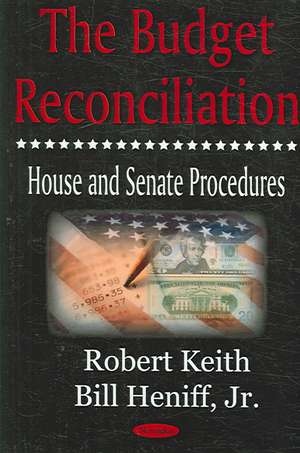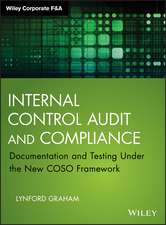Budget Reconciliation
Autor Robert Keith, Paula-Irene Villaen Limba Engleză Hardback – 15 ian 2007
Preț: 379.65 lei
Preț vechi: 512.96 lei
-26% Nou
Puncte Express: 569
Preț estimativ în valută:
72.66€ • 75.57$ • 59.98£
72.66€ • 75.57$ • 59.98£
Carte disponibilă
Livrare economică 22 martie-05 aprilie
Preluare comenzi: 021 569.72.76
Specificații
ISBN-13: 9781594548963
ISBN-10: 159454896X
Pagini: 132
Ilustrații: tables
Dimensiuni: 138 x 212 x 10 mm
Greutate: 0.24 kg
Editura: Nova Science Publishers Inc
ISBN-10: 159454896X
Pagini: 132
Ilustrații: tables
Dimensiuni: 138 x 212 x 10 mm
Greutate: 0.24 kg
Editura: Nova Science Publishers Inc
Cuprins
Preface; Introduction; Overview of the Budget Reconciliation Process; Historical Development; Underlying Authorities of the Reconciliation Process; Section 310 of the Congressional Budget Act of 1974; Section 313 of the Congressional Budget Act of 1974; Procedural Provisions in Budget Resolutions; Other Authorities; Reconciliation Directives in Budget Resolutions; Features of Reconciliation Directives; Types of Directives; Multiple Directives; Impact of Directives on the Deficit or Surplus; Initial Consideration in the House; Development of Legislative Recommendations; by the Instructed Committees; Committee Mark-up Procedures; Committee Submissions; Compliance with Reconciliation Directives; Preparation of an Omnibus Measure by the House Budget Committee; Special Rules and the House Rules Committee; Provisions of the Special Rule; Floor Consideration: Debate and Amendment; Consideration and Disposition of Amendments; Raising and Sustaining Points of Order; Motions to Recommit; Initial Consideration in the Senate; Development of Legislative Recommendations by the Instructed Committees; Relationship With the Budget Committee; Hearings, Mark-up, and Reporting or Submission of Recommendations; Committee Report or Submission Requirements; Preparation of an Omnibus Measure by the Senate Budget Committee; Ensuring Accuracy and Completeness; Dealing With Tardy Responses; Evaluating Compliance; Floor Consideration: Debate and Amendment; Patterns in the Consideration of Senate and House Legislation; Initiating Consideration and Controlling Time; Restrictions on Amendments and Motions to Recommit; "Vote-arama"; The Senates Byrd Rule Against Extraneous Matter .; Definitions of Extraneous Matter; Exceptions to the Definition of Extraneous Matter; Resolving House-Senate Differences on Reconciliation Measures; Initial Motions and Appointment of Conferees; Motions to Instruct Conferees; Conducting the Conference and Reporting the Conference Agreement; Consideration of the Conference Report; Enrolment and Technical Corrections; Presidential Approval or Disapproval; Presidential Approval; Presidential Veto; Line-Item Veto; Cancellation of Limited Tax Benefits; Cancellation of Direct Spending Item.








